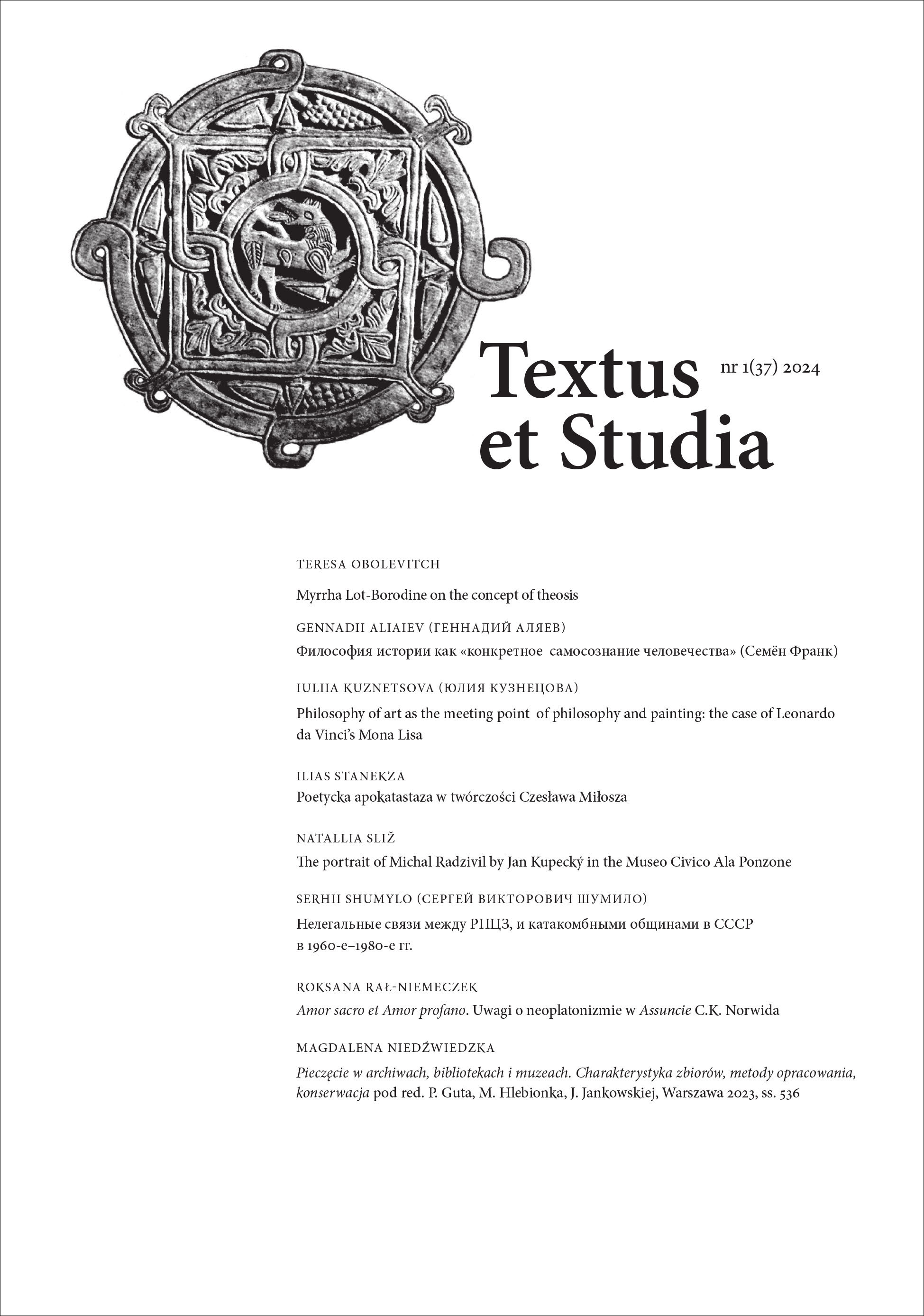Philosophy of art as the meeting point of philosophy and painting: the case of Leonardo da Vinci’s Mona Lisa
DOI:
https://doi.org/10.15633/es.10103Słowa kluczowe:
Philosophy of art, pictorial art, Leonardo da Vinci, Mona Lisa, portraiture, Renaissance philosophyAbstrakt
Renaissance philosophical thought is generally characterised as anthropocentric. During this period, a new sense of identity emerged; pride and self-assertion and an awareness of one’s own power became distinctive. At the same time, the arts were becoming increasingly important, leading to a cult of beauty, harmony and human creativity. The most famous example of this flowering of individual creative activity in the arts is Leonardo da Vinci’s Mona Lisa, which despite many interpretations remains one of the most mysterious and inscrutable works of art. This article attempts to trace the correlation between the Mona Lisa’s portrait image and the philosophical ideas of the Renaissance. It is not a secret that painting in general contains a certain attitude to its corresponding reality. Moreover, pictorial art tends to represent the philosophical ideas of its time. It conveys them in its own artistic way, rather than in verbal forms. This means that to comprehend things and concepts, we can interpret messages not only written down on paper, but painted on canvas. This philosophical approach to painting highlights the coincidence of ideas in philosophy and art. It is also an example of synchronicity: two completely different fields, although not overlapping in methodology and form of expression, nevertheless seeming to illuminate one another. In addition, this view can suggest a plausible and fruitful philosophical way of thinking about art.
Pobrania
Opublikowane
Numer
Dział
Licencja

Utwór dostępny jest na licencji Creative Commons Uznanie autorstwa 4.0 Międzynarodowe.
Autorzy publikujący w czasopiśmie udzielają jego wydawcy zgody o następującej treści:
- Autor zachowuje autorskie prawa majątkowe do utworu, a jednocześnie udziela wydawcy czasopisma zgody na jego pierwszą publikację w wersji drukowanej i wersji online na licencji Creative Commons Uznanie autorstwa 4.0 Międzynarodowe oraz zgody na wykonywanie opracowań, w tym przekładów.
- Autor ma możliwość udzielania zgody niewyłącznej na opublikowanie utworu w wersji, która ukazała się w czasopiśmie (np. zamieszczenia go w repozytorium instytucjonalnym lub opublikowania w książce), wraz z informacją o jego pierwszej publikacji w czasopiśmie.
- Autor może umieścić swój utwór online (np. w repozytorium instytucjonalnym lub na swojej stronie internetowej) jeszcze przed zgłoszeniem utworu do czasopisma.

